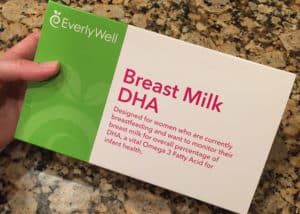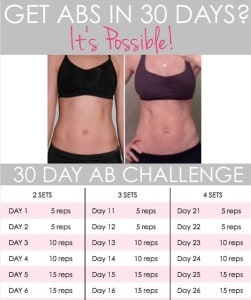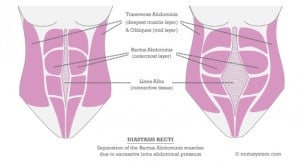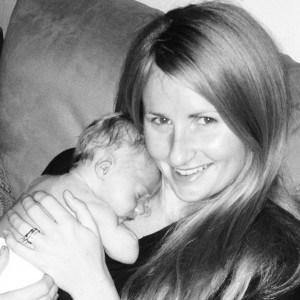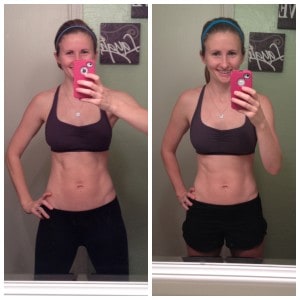I recently had the opportunity to check the levels of DHA in my breast milk from the comfort of my own home. I am sharing my experience using the EverlyWell Breast Milk DHA test kit. Technology is seriously amazing and I think it is great that there are health and wellness tests like this available. This post was sponsored by EverlyWell through my partnership with Fit Approach. With that said, all opinions and test results are my own. #BeEverlyWell #WhyIBreastFeed WHAT IS DHA? You might be wondering why anyone would care to check the levels of DHA in their breast milk in the first place. DHA is an omega fatty acid that aids in the brain and nervous system development of children and is crucial in the first years of your child's life. It is estimated that 75% of Americans are deficient in DHA. DHA is not only crucial for your baby but it is also important for you! DHA stands for docosahexaenoic acid and is commonly referred to as omega-3. DHA along with EPA … [Read more...]
How I Got a Flat Tummy in 30 Days!
Want to know how I got a flat tummy in 30 days? Me too! I would love to know when the results shown in the photo below never happened to me in 30 days. Over the weekend I received an email from a fellow blogger, thank you Sia, notifying me that another blogger was using one of my before and after photos to promote a 30 Day Ab Challenge for a flat tummy. The image was quickly gaining traction on Pinterest. This made my jaw drop. I felt like I had finally made it as a "blogger". My work was stolen and used without my consent. And just so we are all clear on my work here, I mean selfies taken on my iPhone in the bathroom mirror. I know it is probably lame that I got excited about this, but what is it that they say about flattery? ;) Anyway, as flattered as I am that someone used my photo to promote their fitness challenge, I wish that my image had not been used in this way. THIS FIRM FLAT TUMMY IS NOT FROM A 30 DAY AB CHALLENGE I highly dislike the idea of people … [Read more...]
Prenatal Fitness, Diastasis Recti, & Body After Baby
Can I be honest for a moment? This post is for all you ladies who are thinking about becoming pregnant, are currently pregnant, just had a baby last week, have given birth to a child at any point in your life, or for personal trainers who work with any of the afore mentioned demographics. I think one of the questions we, as women, all ask ourselves at some point is what is having a baby going to do to my body. This might sound very vain and superficial to some but I think it is an important topic to discuss. I have seen so many women who have had babies, are working out, eating correctly, and to no fault of their own just can not seem to get rid of their baby belly. So what seems to be the problem? The problem is not from lack of motivation or willpower but from the anatomy of the body after baby. Let me explain... RELAXIN (THE HORMONE) During pregnancy the body releases the hormone relaxin. This hormone peaks at 14 weeks during pregancy and at the time of labor. It allows the … [Read more...]
The Mama Confessionals: Oops…I Peed My Pants!
For the past 7 days I have been sick. Stuffy nose, oh so very tired, and on Friday I developed a horrible cough. I am finally starting to feel better, but being pregnant and having to pee all the time, on top of drinking glasses upon glasses of water to flush out whatever was making me sick caused an interesting weekend. Now for all you mama's out there you know where this is going and if you read the title of this post you know where this is headed. When I was pregnant with Caden I did everything I could to maintain a healthy body post baby, including kegal exercises. There are even several breathing techniques in yoga that work those of so special muscles down below. I thought I was going to be covered in the leaky bladder department. Post baby when I resumed teaching my group fitness classes I realized that no matter how great your efforts are things just aren't quite the same after a baby has come out of your body. My first indication that my body had changed was during a … [Read more...]
My Breastfeeding Story
For the next few weeks I am going to be sharing my experiences as a first time mommy and what has worked for our family during this past (very soon to be) year. Sigh. I can’t believe my baby is going to be year old in June. If you are just joining me here are my previous posts: Baby Registry Must Haves On Becoming Baby Wise 1st Trimester Recap 2nd Trimester Recap 3rd Trimester Recap Homemade Baby Food Essentials Feeding The Baby: The First Year It seems appropriate that after talking yesterday about feeding Caden solids now would be an excellent time to share my breastfeeding story. I knew before I was even pregnant with Caden that my goal was going to be to breastfeed my babies. I approached breastfeeding just like I do anything in my life that I have no clue about, I asked a ton of questions. I talked with my friends, clients, and ob and read tons of articles on the internet. I was in completely uncharted territory about what was going to be happening to my … [Read more...]
10 Months After Baby Stats
Can I be completely honest with you for a moment? I just finished sharing an amazing peanut butter cupcake with my husband and it was soooooo good! All right, enough about that and on to my stats :). 10 MONTH POST BABY STATS WAIST 27″ (pre-pregnancy measurement 27″, no change from last month) Back to pre-pregnancy measurement!!! HIPS 35″ (pre-pregnancy measurement 37″, no change from last month) Below pre-pregnancy measurement!!! WEIGHT 126 lb. (pre-pregnancy weight 130 lb., up 3 lb. from last month) Below pre-pregnancy measurement!!! Finding balance is so important, which is why I shared with you that I just had a few bites of a cupcake. I gained 3 pounds this month and I am totally fine with that. I feel great and knew that after coming off the 21 day cleanse my body would readjust to eating sugar and a limited amount of dairy products. Month 9 and Month 10 comparison photo is shown below. As great as looking good feels, feeling good is even greater. Josh … [Read more...]




